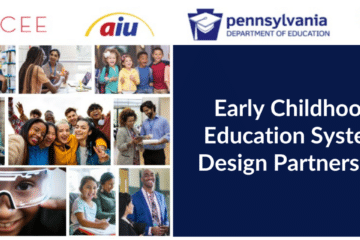Columbia Law School’s Center for Public Research and Leadership’s new report, Fundamental 4: Pandemic Learning Reveals the Value of High-Quality Instructional Materials to Educator-Family-Student Partnerships, notes that there are generally three anchors of learning and instruction—teachers, students, and instructional materials—and the relationships among them “propel student learning day-to-day and…fuel improvement over time.” The authors posit that the pandemic has fundamentally transformed this instructional core to include families as a fourth anchor. The report, based on a study of nine school systems across seven states, suggests that “high-quality” instructional materials should be designed with families in mind and provide key information to support children at home, as well as be tech-enabled and culturally responsive.
Harvard Graduate School of Education’s Education Redesign Lab released a how-to guide for education, government, and community leaders interested in creating cross-sector systems of support for young children. Collaborative Action for Equity and Opportunity is designed to give policymakers and practitioners a set of tools and a roadmap for initiating and sustaining a collaborative approach to supporting the healthy development of all children. The authors, Education Redesign Lab Founding Director Paul Reville and Research Director Lynne Sacks, suggest that school and municipal leaders create Children’s Cabinets that bring together government agencies and community organizations to work together to coordinate youth-focused services and resources—both in and out of school. The guide offers examples of communities that have undertaken this work, and specific strategies and guidance derived from their collaborations with more than 30 communities across the country.
The Centre on Strategic Education in Australia released its fourth paper in a series on ‘Leading Education.’ Authored by Valerie Hannon and NCEE’s Anthony Mackay, co-founders of the Global Education Leaders Partnership (GELP), The future of educational leadership: Five signposts, explores the nature of the leadership required at this pivotal time in human history. The paper argues that a new form of leadership is urgently needed to reshape our educational systems in a post-Covid environment, taking into account how our schools relate to the economy, technology innovations, and the broader society. The authors offer and discuss five ‘signposts’ to indicate the direction that leadership should take. Find a brief video discussion as well as the paper itself here.
The National Council on Teacher Quality (NCTQ) has published new data on the pass rates on teacher licensure tests for institutions preparing elementary teachers in 38 states and the District of Columbia (12 states did not provide the requested data). This new data set focuses on licensure tests in elementary content—English language arts, science, mathematics, and social studies—and includes first-time and best-attempt pass rates, the number of attempts, pass rates by the academic selectivity or socioeconomic characteristics of the institution, and pass rates for test takers of color. Very little of this data has been published previously. According to NCTQ’s press release, a “notably high percentage of institutions (29 percent) had first time pass rates of less than 50 percent across three years of requested data (2015-2018). Further, the data shows that many aspiring teachers who fail the first time do not persist. Nearly a quarter of all test takers (22 percent) who failed on their first attempt do not retake the test, and the percentage rises to 30 percent
Finally, throughout the pandemic, the Center on Reinventing Public Education (CPRE) has been compiling hundreds of studies to evaluate the impact of school closures and disruptions to learning on America’s students. In its latest report, How Much Have Students Missed Academically Because of the Pandemic? A Review of the Evidence to Date, CPRE reviewed 12 studies that tracked student academic progress pre- and post-pandemic using state test scores or interim assessments. The report concludes that the evidence to date on test scores shows that the average student tested in fall 2020 performed at lower levels than prior grade-level cohorts because of the pandemic and associated disruptions in schooling. While concluding that the average student made less progress than is typical, the authors also acknowledge that much remains unknown, including how different subgroups of students fared or precisely how much learning students may have missed. CRPE is separately examining the pandemic’s effects on social-emotional development and well-being, and on students with disabilities. CPRE intends to compile its findings into a final report that assesses the extent of student needs and inequities, implications for policy and practice, and promising practices and innovations.




